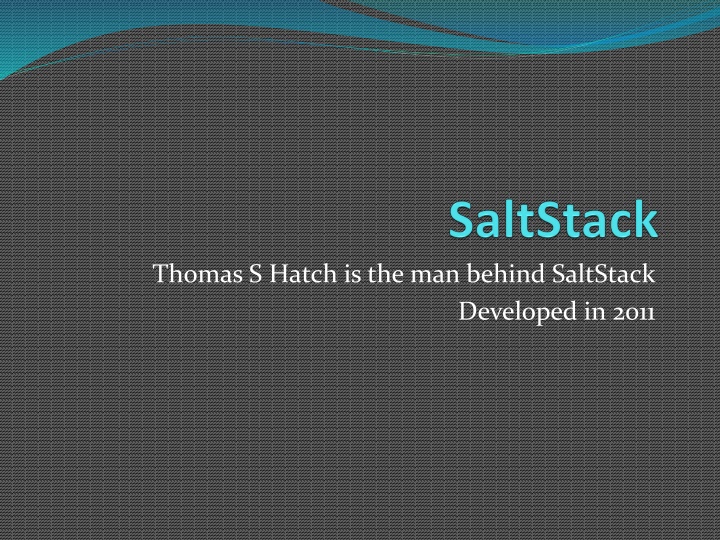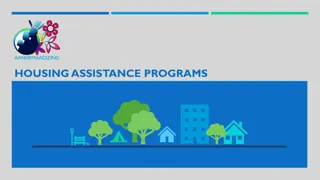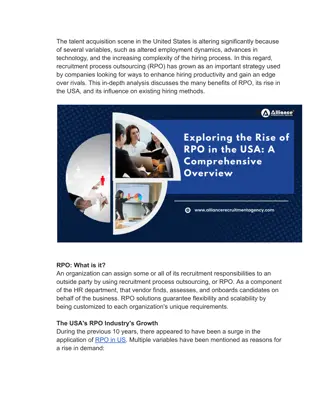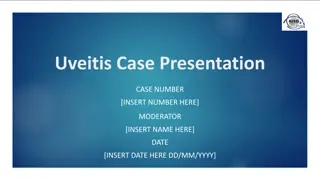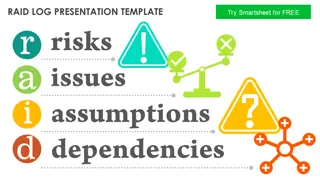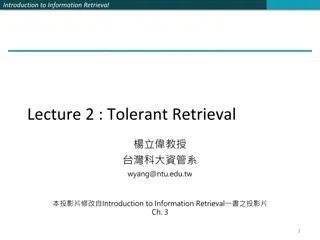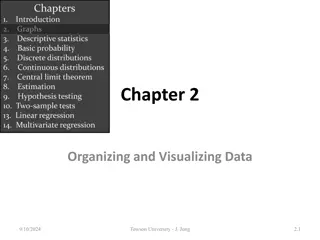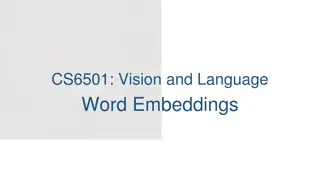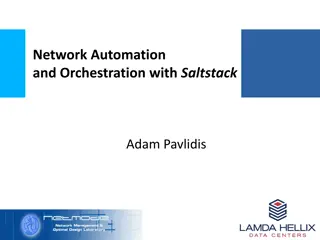SaltStack: A Comprehensive Overview
SaltStack, developed by Thomas S. Hatch in 2011, is an open-source configuration management and remote execution engine known for its agent-based or agentless approach. This powerful tool helps automate processes, reduce errors, and ensure high stability in IT organizations. With a focus on infrastructure as code, SaltStack utilizes ZeroMQ for high-speed communication between master and minion nodes. Learn about its architecture, working mechanism, and how it simplifies automation in IT environments.
Download Presentation

Please find below an Image/Link to download the presentation.
The content on the website is provided AS IS for your information and personal use only. It may not be sold, licensed, or shared on other websites without obtaining consent from the author.If you encounter any issues during the download, it is possible that the publisher has removed the file from their server.
You are allowed to download the files provided on this website for personal or commercial use, subject to the condition that they are used lawfully. All files are the property of their respective owners.
The content on the website is provided AS IS for your information and personal use only. It may not be sold, licensed, or shared on other websites without obtaining consent from the author.
E N D
Presentation Transcript
Thomas S Hatch is the man behind SaltStack Developed in 2011
Why SALT ? Agent-based or agent less execution engine. Eliminating manual processes Reduce errors that occur in IT organizations Known for High stability Remotely executes commands across all machines Puppet, which came out in 2005, and Chef, which debuted in 2009. Automate Everything and Everything as a code
Over view SaltStack Overview Introduction to YAML Installation of SaltStack Salt Command Line Basics Targeting Minions States Templating Pillar
General Intro SaltStack is an open-source configuration management and remote execution engine. Salt can also operate as an agent-based or agentless execution engine. Agent installation - you install agent on client computer Agentless installation - you add the computer in Dashboard but do not deploy the agent Salt Main Idea is to make Infrastructure as a code Automatically manage the technology stack for an application through software instead of Manual
Zero MQ / Master / Minion SaltStack uses the ZeroMQ messaging library to process high-speed requirements ZeroMQ can talk to 10,000+ systems in parallel (so can connect to as many as systems in milliseconds and command them) Salt uses a slave-master setup that enables push and pull execution. ->Salt functions on a master/minion topology. A master server acts as a central control bus for the clients (called minions), and the minions connect back to the master.
Simple Architecture Slat Master---->Event Bus----->(n) No of minions SALT Minion Server 3 SALT Minion Server 4 SALT Minion Server 2 4505 4506 EVENT BUS(Zero MQ) SALT MASTER (Server 1)
How it works Salt Master will PUBLISH to Event Bus Event Bus will communicate to Salt Minions All Salt Minion Subscribe to Event Bus The Matching Salt Minion ID will get the request others will Reject Zero MQ is the Event Bus used here which is used for very high volume of data messages with minimal delay 4505 and 4506 Both are Event bus port used for publish and respond
FINDING THE SALT MASTER When a minion starts, by default it searches for a system that resolves to the salt hostname on the network If found, the minion initiates the handshake and key authentication process with the Salt master. USING SALT-KEY Salt authenticates minions using public-key encryption and authentication. For a minion to start accepting commands from the master, the minion keys need to be accepted by the master
YAML Data serialization language designed to be human- readable and working well with modern programming languages for everyday tasks. .yml files represent YAML (Simulates JASON or XML) YAML File is used to represent Data with a KEY: Value pair using Arrays , Dictionary or list. Make Sure of Indentations (Space Between) Any line beginning with # is considered as COMMENT.
Dictionary is un ordered and Arrays or list is ordered
How to Install Master Runs only on Linux Minions Run both on Windows and Linux ### install Salt Latest version curl -L https://bootstrap.saltstack.com -o install_salt.sh ## install salt with Master and Minion sudo sh install_salt.sh -P M (-P pip Packages / -M master) ## installation complete! sudovi /etc/salt/minion ### update the minion id and master master: localhost id: SALT Minion Server 2
Working on SALT Need to know Master Minion GLOB * SLS or SaLt State file Two types of Variables Grains (used for gathering minion property dynamically) Pillars (user defined push some data to minion)
Salt Master The Salt master daemon, used to control the Salt minions Salt master will publish to Event bus which is zero MQ Some Times Master will also do the subscribe Master runs only on Linux Salt Master is the central bus for all the minions We can also have Multi Master configuration sudovi /etc/salt/minion(Enter the master) master: localhost (or the FQDN name) id: admaticweb1-> Minion ID To Check Salt Master status Sudo Service salt-master status
Salt Minion Salt Minion will subscribe to the event bus Minion will have Minion ID(SALTMinion Server 2) , If missed Hostname will be taken as Minion ID. Minions runs both on Linux and windows To Check the status of Minion Sudo Service salt-minionstatus To Check the log files if Minion sudo tail -100 /var/log/salt/minion Minions will be mentioned under sudovi /etc/salt/minion
Some Basic commands How to restart Master sudo service salt-master restart To Check the log files sudo tail -100 /var/log/salt/master netstat nltp You should see 4505 and 4506 port running To list the available Minions sudo salt-key sudo salt-key To Accept the Minion sudo salt-key a SALT Minion Server 2
Grains Grains used to collect Minion property dynamically sudo salt '*' test.ping -> we used Glob here which takes the list and o/p of all Minions Grains are used for Gathering sys.list_functionsare used to check all commands available for a function sudo salt '*' sys.list_functions test Grains provide information about the target system -- for example, its OS version -- to the minions.
Pillars Pillars are user defined variables Push some data to Minion Pillar data is useful for: Highly Sensitive Data Minion Configuration Variables To start setting up the pillar, the /srv/pillar directory needs to be present: mkdir /srv/pillar Note Grains and Pillar are sometimes confused, just remember that Grains are data about a minion which is stored or generated from the minion. This is why information like the OS and CPU type are found in Grains. Pillar is information about a minion or many minions stored or generated on the Salt Master.
Top File Top.sls file is Default on the top . Top files are named top.sls by default. In a infrastructure There would be different domains with a group of machines the configuration roles that should be applied to them is called a top file. To trigger top.sls is called state.highstate Salt * state.highstate State File Pillar file For config mgmt /srv/salt/top.sls Salt command (Remote Execution) Salt Run (On Master) Salt-call (Local Machine) For Data Access /srv/pillar/top.sls
Quick refresh Salt which is a latest and highly Stable Configuration management and Devops tool uses a Master slave concept with a Event Bus called Zero MQ By This time we should know why Salt is one of the better configuration management tool and installation of salt as exe and Bootstrap format And General commands like how to start, stop or add a Minion and to gather Grain or Push data to a Pillar where to set a top value to see logs and some basic commands.
